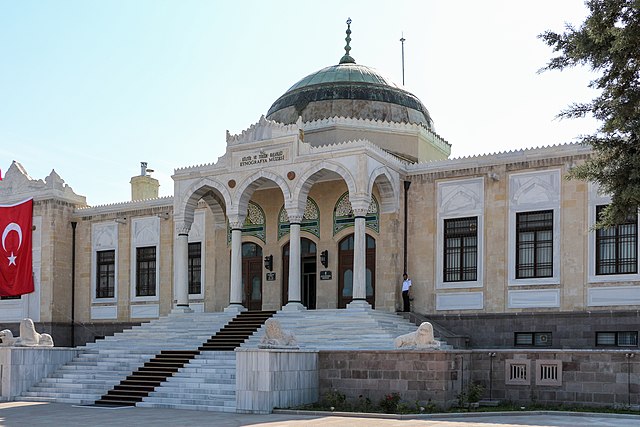The Gospel of Barnabas is a non-canonical, pseudepigraphical gospel written in the Late Middle Ages and attributed to the early Christian disciple Barnabas, who is one of the apostles of Jesus. It is about the same length as the four canonical gospels combined and largely harmonizes stories in the canonical gospels with Islamic elements such as the denial of Jesus' crucifixion. The gospel presents a detailed account of the life of Jesus. It begins with the nativity of Jesus, which includes the annunciation by the archangel Gabriel to Mary which precedes Jesus' birth. The gospel follows his ministry, ending with the message of Jesus to spread his teachings around the world. Judas Iscariot replaced Jesus at the crucifixion.
1835 painting of the Austrian National Library, where the Italian manuscript was kept
The University of Sydney's Fisher Library, where the Spanish manuscript was discovered
The Ethnography Museum of Ankara, where a Syriac copy is being held
Some researchers believe that phrases in Barnabas resemble those used by Dante Alighieri.
Pseudepigrapha are falsely attributed works, texts whose claimed author is not the true author, or a work whose real author attributed it to a figure of the past. The name of the author to whom the work is falsely attributed is often prefixed with the particle "pseudo-", such as for example "pseudo-Aristotle" or "pseudo-Dionysius": these terms refer to the anonymous authors of works falsely attributed to Aristotle and Dionysius the Areopagite, respectively.
Pseudo-Dionysius the Areopagite





